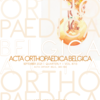Long-term outcome of cementless total hip arthroplasty with threaded Tropic® acetabular cup and Corail® femoral stem
Adult ; arthroplasty ; replacement ; hip ; treatment outcome
Published online: Nov 22 2021
Abstract
This study investigates the clinical and radiological results of a tapered femoral stem (Corail®) and uncemented threaded acetabular cups (Tropic®) and in addition an analysis of the complications and retrieved implants was conducted. Between January 1990 and September 1998, 301 total hips arthroplasties in 268 patients were implanted. 78 patients (87 hips) had died and 9 patients (12 hips) had been lost to follow-up, leaving at the time of the latest follow-up 180 patients (202 hips). The mean age at surgery was 56,1 (27-75) years. Of the 154 unrevised hips, the median Harris and Merle d'Aubigne and Postel hip scores were 83,3 points and 15,3 points respectively at the latest follow-up. The median follow-up time was 16.9 years (10,4-25). No femoral component was revised for aseptic loosening ; osteolysis was observed in the 9,5% of the implants (13 stems). 48 hips (23%) were revised and 27 cups (56,2%) needed revision surgery because of massive polyethylene wear. Pelvic osteolysis was found out in 80 cups (58,8%). 87 hips (63,9%) showed signs of a progressive wear of the liner, more than 2mm in 48 hips. Kaplan-Meier survivorship analysis at 15 years follow-up was 81.2% with revision for any reason (85.8% for mechanical or radiographic loosening). High rates of polyethylene wear and the high prevalence of pelvic osteolysis are serious matters in these types of implants with high rates of revision at 15 years follow-up so we decided to abandon the concept of a threaded cup design in favor of a press-fit acetabular cup.
